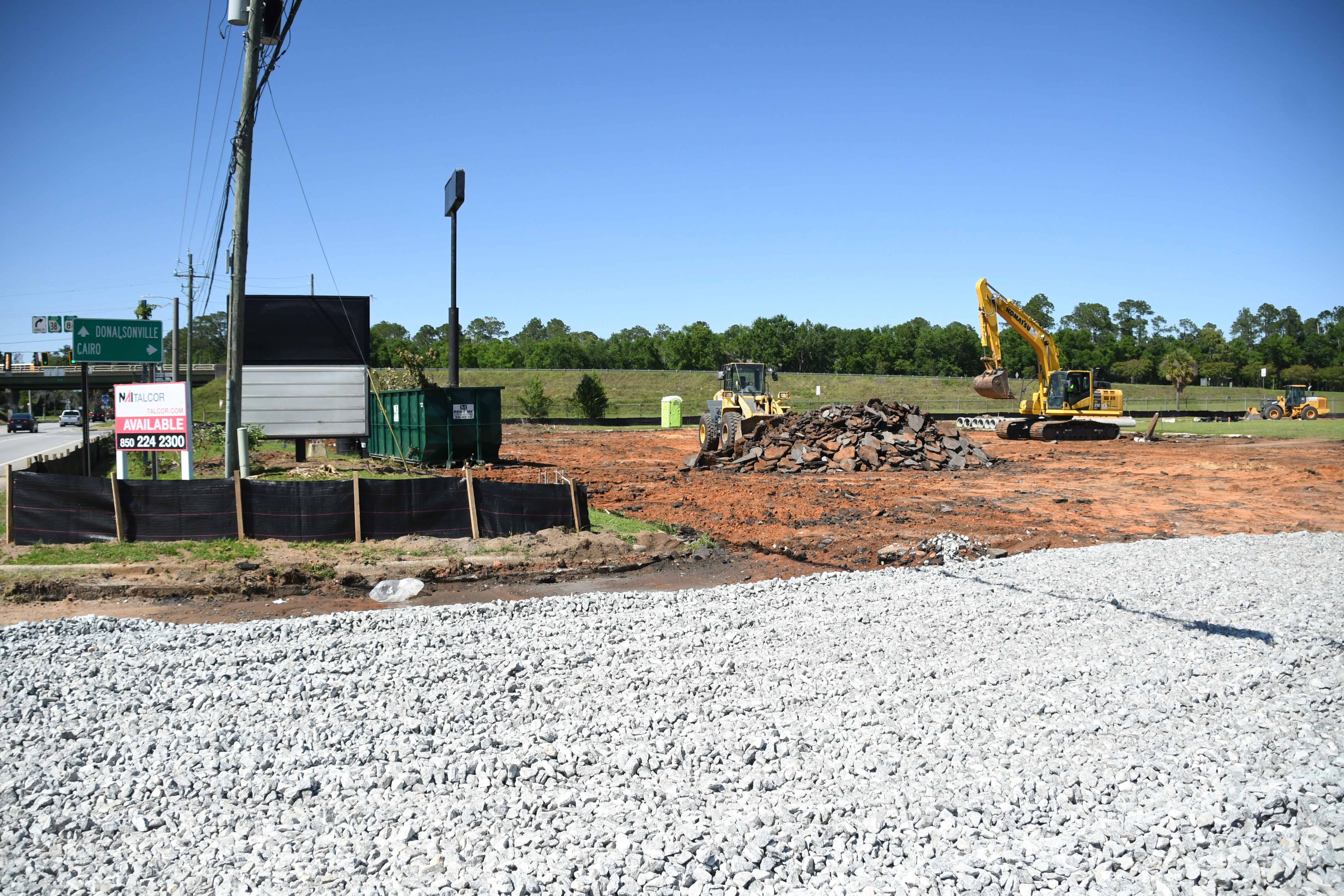Lunch with cutthroats, ruffians and gamblers
Published 4:32 pm Friday, July 17, 2009
A few days ago, we sat before a large picture window, down at shore level while looking out upon the swift rolling Mississippi River in a most unlikely placed called “Natchez Under The Hill.”
While splitting a club sandwich and drinking some of the best iced tea west of Bainbridge, we were having lunch in what was once one of the bawdiest of bawdy houses along the Mississippi River.
Back in the 17th century and a good part of the 18th century, Natchez Under the Hill was the most notorious river stop for thousands of pioneers traveling west. Here were the saloons, the prostitution, the gamblers, cutthroats and murderers indulging themselves in just about every imaginable vice.
Natchez Under the Hill still exists today, though not as bawdy, but gambling does exist on the Isle of Capri, a casino a few doors away dressed up to resemble a romantic steamboat of the 1880s. Locals take the romance out of the Isle of Capri by calling it “just a barge” because it doesn’t have an engine.
Silver Street is part of the historic district of Natchez, Miss. You can drive down from the bluff, find a parking place if you can, indulge in the Under The Hill Saloon or the Mark Twain guest house, or dine at the Magnolia Restaurant where the food probably doesn’t mirror any of the fare of centuries past.
In later days when Natchez Under the Hill was finally civilized, here was the wharf where the big steamboats landed in their heyday before and after the Civil War and into the early 20th century.
Since 1811, Natchez was one of the busiest stops along the Mississippi, taking on passengers embarking to Baton Rouge, New Orleans, or going up river to Vicksburg, St. Louis and beyond. If you sat here on the wharf in front of the Magnolia Restaurant in 1875, for example, you would see the river boats loading up with bales and bales of cotton, coming in from the huge plantations surrounding Natchez and from Vadalia, La., across the river.
You might board the Belle Memphis, or the J.M. White, two of the showiest boats on the river, possibly piloted by Horace Bixby, made famous by Mark Twain in his book, “Life on the Mississippi.” Sam Clemons, (Mark Twain) if you remember your readings, was for a short time a riverboat pilot himself, trained by the hard-driving Bixby.
It was also a time of the keel boats whose operators were a rough, tough breed. Twain described them as rough and hardy men; rude, uneducated, brave, suffering terrific hardships with sailor like stoicism; heavy drinkers, coarse frolickers in moral sites like the Natchez under the hill of that day; heavy fighters, reckless fellows, every one, elephantinely jolly, foul witted, profane … yet, in the main, honest, trustworthy, faithful to promises and duty, and often picturesquely magnanimous.
The keel boaters of the early 19th century knew that Natchez Under The Hill was known for having the best brothels and bars, the best place on the river to carouse.
As we sat there in the Magnolia Restaurant, our table, one of two able to enjoy the magnificent view of the Mississippi River, we saw no carousers, no drunks, no questionable women. Our only companions of the room were three senior ladies, tourists like ourselves, considering whether or not to board the Isle of Capri for a few moments to play the slots.
While we sat at our table watching the Mississippi roll by, there were no steamboats at the wharf, no screeching steam whistle to announce an impending arrival, no boys running from the top of the bluff to meet the boats, no roustabouts standing by to load 400-pound bales of cotton, no offloading of supplies for the towns people or nearby plantations, no fancy furniture from Europe to furnish the 50 plus fancy in-town mansions of the millionaire planters, no rare books for their houses, fine clothes for the families, expensive food items or traveling entertainers.
Instead, it was a tranquil scene, broken occasionally by the new boat traffic on the river—diesel driven tugboats pushing giant barges either up river or down river, barges loaded with enough material of grains or coal or other goods to fill 20 freight trains.
The Civil War momentarily halted steamboating on the Mississippi. Owners stashed their boats into hidden bayous and backwaters, up stream and out of the way of the Union invaders. At the end of the war, the big steamboats returned, the Belle Memphis, J.M. White, the Carneal Goldman, Lula Prince, Charles Rebstock.
In the 1880s, more elaborate ships were built, with names of towns along the river. You could travel from New Orleans to St. Louis on the Arkansas City, Belle Memphis, City of Vicksburg, City of Natchez, Saint Joseph, City of Monroe, the Hill City, to name a few. In return, a city with a steamboat named in its honor usually returned the favor with a gift, many times a grand piano for the grand stateroom.
About this time, electric lights on board steamboats and guide lights on shore came into being. It caused Mark Twain to comment that “the lights had turned the Mississippi into a sort of two thousand mile torchlight procession.”
In 1909, three large steamboats tied up at Natchez Under the Hill carrying President Taft and his entourage as they headed for a Lakes-To-The Gulf Deep Waters Convention in New Orleans. Taft disembarked, participated in a parade in Natchez and held a political rally.
As the new century dawned, steamboating began to fade. The railroads came into being and could haul passengers and freight faster and farther.
Today, Natchez has on display the results of three local photographers who chronicled life in the city and on the river from 1850 to 1951. One photographer, Henry Norman, 1850-1913, hometown Newnan, Ga., came to Natchez in 1870 and eventually opened a photo studio. His son, Earl, followed in his father’s footsteps, photographing life in Natchez until his death in 1951.
From about 75,000 negatives, there are now about 300 photographs on display at the First Presbyterian Church, including more than 100 photos of steamboating at Natchez Under the Hill and other points along the river. It’s an astounding collection. Probably none like it elsewhere, a true treasure of history in photos.
We studied the photos and got lost in their images. Later, we sat at our table in the Magnolia Restaurant, Natchez Under the Hill, watching the river swirl by while we ate our club sandwich and drank our iced tea. We cocked our ears to possibly hear an approaching steam whistle, listening too for the churning of the paddle wheels in the water, looking skyward for signs of black smoke trails drifting from the long dominant stacks. We awaited the steamboat’s arrival.
Alas, none came.



